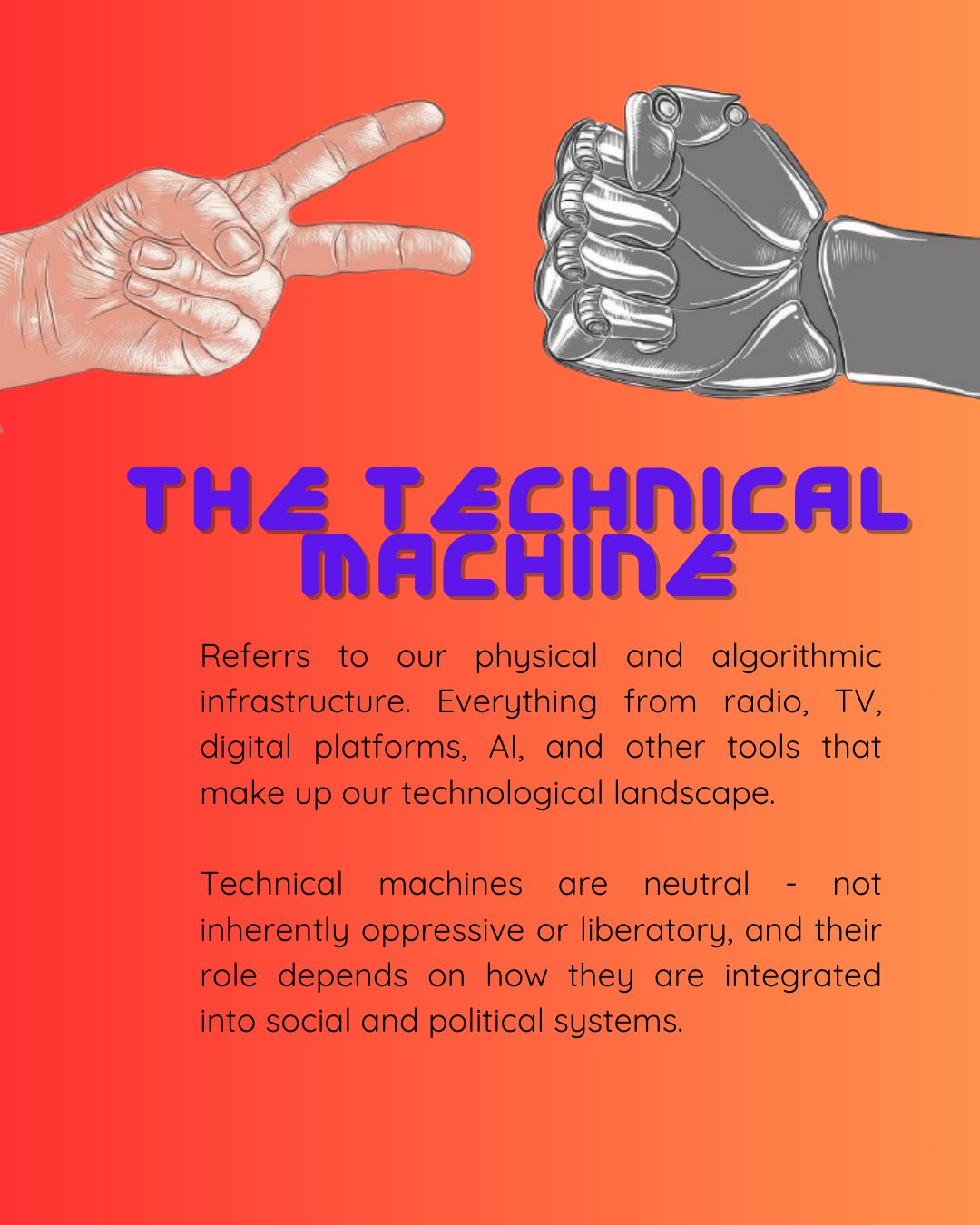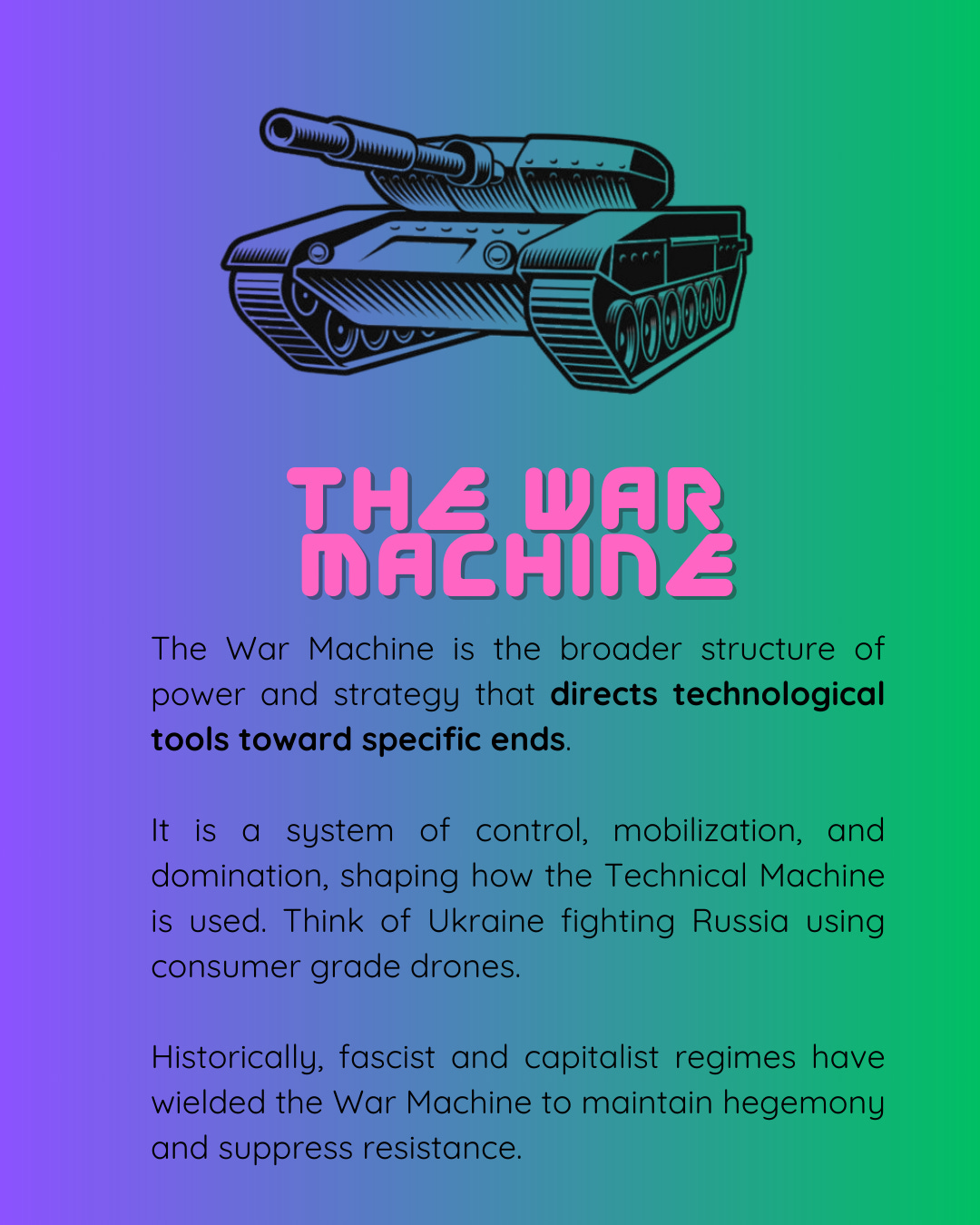AI Serves Power, Not People
Register for our first live hang on Thursday, February 27 at 7pm EST!
FIRST LIVE SESSION
Join our upcoming online Book Club meeting at 7 PM EST! Whether you've read the book and are eager to discuss, or you're simply curious to learn more, everyone is welcome. To register and receive the meeting invite, please click the link below:
ADD THE MEETING TO YOUR CALENDAR HERE! (basically, just hit “SAVE” and the invite will show up in your calendar.)
Come if you've read the book and want to discuss. Come if you just want to learn more. Doesn't matter, all welcome!
Maurizio Lazzarato’s Capital Hates Everyone is a striking analysis of how non-human actors—technology, capitalism, and political power—shape contemporary society. His discussion of the Technical Machine and War Machine challenges the common belief that technological advancements operate independently of social and political structures. Instead, Lazzarato argues that technology is never neutral; it is always embedded within systems of power that serve capitalist and fascist interests.
The Myth of Technological Neutrality
Many commentators—both utopian technologists and dystopian critics—assume that technological change inherently leads either to liberation or domination. I encountered this debate firsthand while researching digital culture during my graduate school days.
At the time, I leaned toward the utopian view of technology, believing that computer-mediated communication (CMC) could democratize information and empower individuals. That optimism didn’t last long. The rise of corporate-controlled social media platforms like Facebook and Twitter in 2007 quickly exposed how digital technology could just as easily be co-opted to serve capital and consolidate power.
Lazzarato insists that technology’s role is always dictated by power structures. Consider the current hype around AI—often framed as a tool for democratization and efficiency. But who benefits from that efficiency? A recent news story highlights this dynamic:
A senior SpaceX and White House security staffer, Christopher Stanley, developed an AI chatbot powered by Elon Musk’s xAI to assist the Department of Government Efficiency (DOGE) in reducing government waste. The chatbot followed five “First Principles,” which included:
Simplifying Government Requirements: Eliminating redundant or complex regulations.
Removing Bureaucratic Layers: Cutting administrative processes that slow decision-making.
Efficiency Through Technology: Advocating for drones and wearables to streamline government functions.
Cost-Cutting and Streamlining: Reducing expenditures by targeting "unnecessary" programs.
Modeled on Past "Efficient" Leaders: Drawing inspiration from figures like Margaret Thatcher and Lee Kuan Yew.
On the surface, these principles may seem like a logical streamlining of governance. But efficiency is a political weapon. Who defines what is "unnecessary"? In practice, reducing regulation often means gutting oversight, concentrating power, and accelerating privatization. Lazzarato’s argument plays out in real-time: AI is not inherently liberatory and is being designed to serve capitalist and authoritarian interests.
Understanding the Technical Machine and War Machine
Lazzarato distinguishes between two key concepts:
The war machine and the technological machine represent two distinct but interrelated forces in society.
The war machine, as conceptualized by Deleuze and Guattari, operates outside the formal state apparatus, embodying nomadic, disruptive, and deterritorializing forces that challenge established power structures.
In contrast, the technological machine functions within structured systems of control, optimizing production, administration, and governance.
While the war machine resists institutional capture, the technological machine is embedded within power structures, often serving capitalism, surveillance, and state control. This distinction is crucial because while technology can emerge from the war machine’s radical potential (e.g., hacker movements, open-source networks), it is frequently reabsorbed into the technological machine, reinforcing existing hierarchies rather than dismantling them. Understanding this relationship helps critique the assumption that technology inherently leads to liberation. Instead, technology often becomes a mechanism of regulation and expansion for dominant powers.
The Myth of Automated and Impersonal Control
One of Lazzarato’s most compelling critiques is that neoliberalism has not led to an impersonal automation of power—it has simply made oppression more efficient.
Many assume that governance today is increasingly detached, managed by AI, algorithms, and bureaucratic cybernetic systems. But Lazzarato argues that decision-making remains highly centralized. Technology does not depersonalize oppression—it merely gives the ruling class better tools for surveillance, propaganda, and control.
We see this everywhere:
Corporate AI gatekeeping in hiring, filtering out job applicants before a human ever reads their résumé.
Automated welfare systems deny benefits with no recourse for appeal.
Social media algorithms are amplifying extremist content because outrage drives engagement.
Take the AI-driven government cuts mentioned earlier. If an AI chatbot suggests slashing social security, politicians can claim, “It wasn’t us! The AI went rogue!” Automation allows power to mask itself behind algorithms, making it harder to hold decision-makers accountable. As a result, we are hurtling toward an increasingly Kafkaesque world where power is omnipresent but faceless.
The Modern Face of Fascism
Lazzarato argues that fascism is not a relic of the past but a recurring strategy capitalism employs during times of crisis. Rather than seeing digital fascism as an anomaly, he suggests it is a predictable response to capitalism’s failures.
Historically, fascist movements have been backed by business elites seeking to suppress labor movements and socialist organizing. Today’s cyberfascism operates similarly, but with digital tools:
Unions are crushed, not just with the police force but through algorithmic blacklisting.
Social resistance is neutralized by data surveillance and predictive policing.
Nationalist propaganda spreads faster through algorithm-driven radicalization.
Understanding fascism as a structural phenomenon (not just ideology) forces us to ask a difficult question: If capitalism keeps reviving fascist tendencies whenever it faces instability, is resistance to fascism enough? Or must we challenge the economic system that enables its return?
Countering the Capitalist War Machine
If capitalism and fascism repeatedly co-opt technological potential, how do we resist?
Lazzarato suggests that counter-power must develop its own war machine—not just resisting technological control but repurposing digital infrastructure for collective liberation. Decentralized networks, worker-controlled platforms, and grassroots technological movements could challenge corporate monopolization. But can this strategy succeed before capitalist forces absorb and repackage these movements?
Final Thoughts: Can Technology Be Reclaimed?
Lazzarato’s critique is compelling, but it leaves an open question: Is repurposing these tools enough, or must we dismantle them entirely? Historically, technology has been reclaimed by counter-power—open-source movements, whistleblowers, labor organizing—but the forces of capture remain relentless.
What do you think?
Have you experienced the impact of AI-driven decision-making in your own life (job applications, social media, government services)?
Can technology be turned against capitalist control, or does it inevitably serve those in power?
What are examples of successful resistance to technological capture?
Join us for our discussion at 7 PM EST—we’d love to hear your thoughts!






